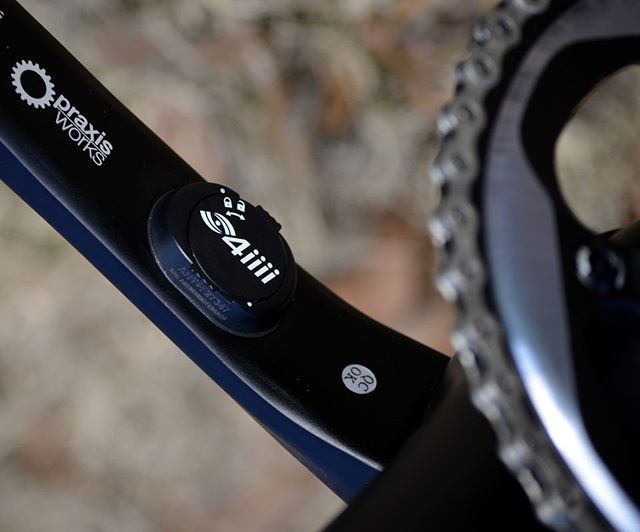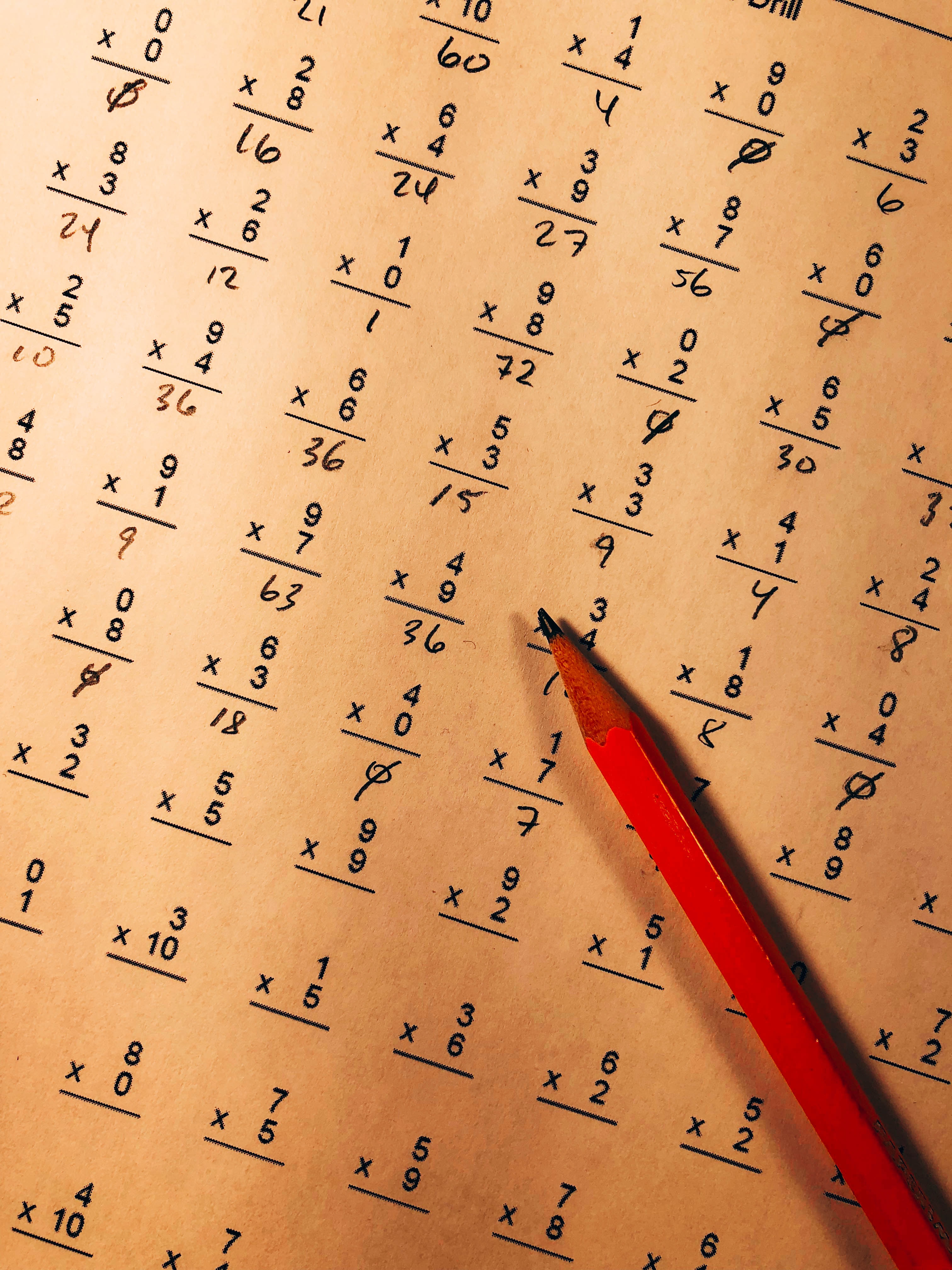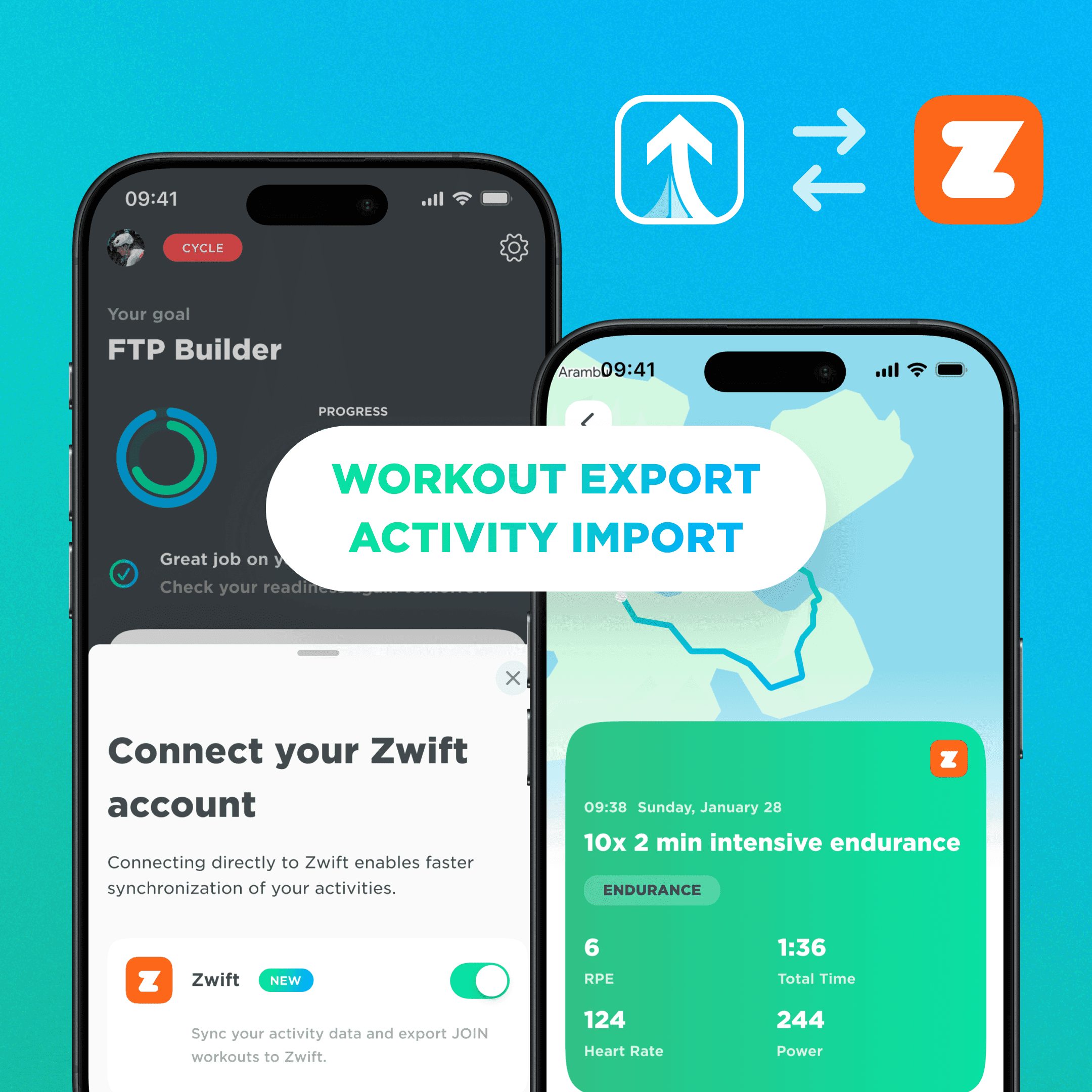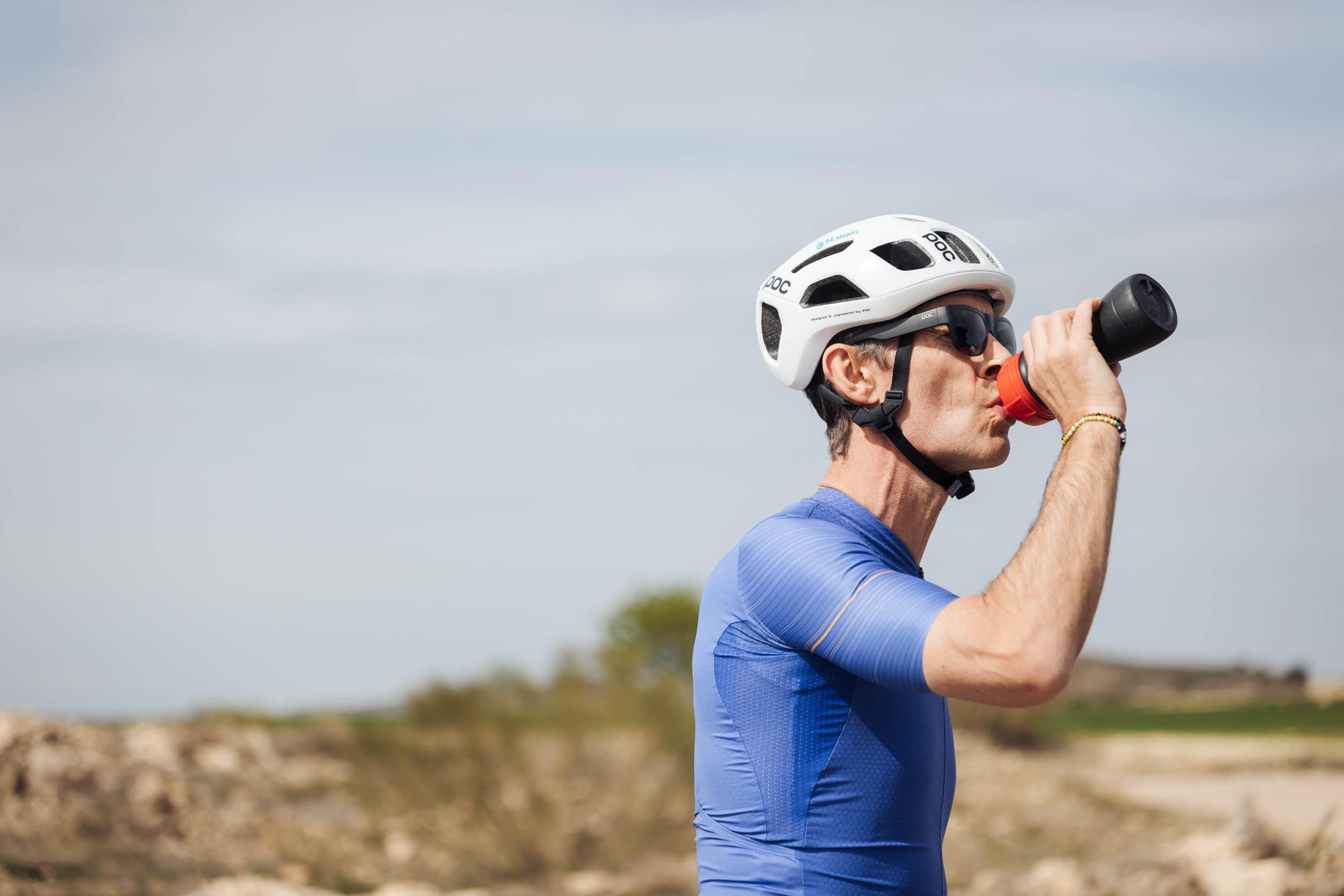Which power meter should I buy?

May 20, 2021

Which power meter should I buy?
May 20, 2021

Which power meter should I buy?

May 20, 2021

This is perhaps one of the most frequently asked questions. While we don't give concrete buying advice for buying a powermeter, also because we don't know the size of your wallet, there are a few things to consider. If you take these tips into account with your search, the choice will probably become a lot easier.
What does a power meter measure?
A power meter is little more than a very thin strip of metal (the strain gauge) that measures how much it is deformed when force is applied to it. In doing so, a power meter must also know the pedaling frequency (rpm), because force times speed equals power. With the right calibration and thus the measurement of this deformation and cadence, a number is calculated and sent to the bike computer that shows you the delivered power. This principle is the same for every power meter, but can be applied in different places on the bike.
Compatability
Power can be measured on the bottom bracket or spider (SRM, Quark, Rotor, Power2Max), at the cranks (Shimano, Stages, 4iiii), pedals (Garmin, Favero, Powertap) or at the rear wheel (Powertap). There are some other exotic solutions on the market, but they do not improve on the other offerings in terms of reliability and repeatability (more on this later). A rear wheel or pedals are super easy to mount, but then you are stuck with that one wheel or a specific pedal system. A spider system or crankset requires a bit more assembly work, often you have to replace the whole crankset, but then you don't have this problem.
Reliability of the Power Meter
Another thing to consider is the reliability of the power meter. Does the power meter measure what you want to measure? If you pedal at 200 Watts, does the power meter indicate 200 Watts? There are many blogs about this where power meter readings are compared. This seems super important, but actually it's not. A power meter is mainly a tool to improve yourself and to compare your power values with your own previous power values. If your power meter is always 20 Watts off, it does not matter that much. You only have to be careful not to compare your power with someone else's. This is also why the cheaper option of a single-sided power meter is actually fine for almost every recreational cyclist. A single-sided power meter is only mounted on the non-drive side and multiplies the measured power on that side by two. This factor can often be adjusted with the bike computer. Nobody pedals at exactly 50% of his or her total power with the left leg all the time. But as long as you compare the reading with your own values from the same power meter, this doesn't matter that much.
Repeatability
The fact that a power meter indicates 200 Watts one day and 220 Watts the next is a much bigger problem. This is about the repeatability of the measurements. For example, when the battery begins to run out and the voltage declines, almost all power meters will begin to show more variability. In a general sense, new power meters that have just come on the market have problems in this area. It often takes a few generations before all the small problems are discovered and solved.
Our advice in buying a Power Meter
Buy a power meter that is easy to mount on your bike without too many modifications. If you already have a Shimano crankset, ask yourself if you want to replace it with a SRAM or Rotor system. Probably not. In addition, choose a power meter that has been on the market for a while and has been through its teething problems. If a single-sided power system fits your current crankset and if you mainly want to compare the power with yourself, go for a single-sided system. If you insist on a power meter that you can easily switch between, say, your time trial bike and road bike, consider a pedal system or rear wheel hub system.
This is perhaps one of the most frequently asked questions. While we don't give concrete buying advice for buying a powermeter, also because we don't know the size of your wallet, there are a few things to consider. If you take these tips into account with your search, the choice will probably become a lot easier.
What does a power meter measure?
A power meter is little more than a very thin strip of metal (the strain gauge) that measures how much it is deformed when force is applied to it. In doing so, a power meter must also know the pedaling frequency (rpm), because force times speed equals power. With the right calibration and thus the measurement of this deformation and cadence, a number is calculated and sent to the bike computer that shows you the delivered power. This principle is the same for every power meter, but can be applied in different places on the bike.
Compatability
Power can be measured on the bottom bracket or spider (SRM, Quark, Rotor, Power2Max), at the cranks (Shimano, Stages, 4iiii), pedals (Garmin, Favero, Powertap) or at the rear wheel (Powertap). There are some other exotic solutions on the market, but they do not improve on the other offerings in terms of reliability and repeatability (more on this later). A rear wheel or pedals are super easy to mount, but then you are stuck with that one wheel or a specific pedal system. A spider system or crankset requires a bit more assembly work, often you have to replace the whole crankset, but then you don't have this problem.
Reliability of the Power Meter
Another thing to consider is the reliability of the power meter. Does the power meter measure what you want to measure? If you pedal at 200 Watts, does the power meter indicate 200 Watts? There are many blogs about this where power meter readings are compared. This seems super important, but actually it's not. A power meter is mainly a tool to improve yourself and to compare your power values with your own previous power values. If your power meter is always 20 Watts off, it does not matter that much. You only have to be careful not to compare your power with someone else's. This is also why the cheaper option of a single-sided power meter is actually fine for almost every recreational cyclist. A single-sided power meter is only mounted on the non-drive side and multiplies the measured power on that side by two. This factor can often be adjusted with the bike computer. Nobody pedals at exactly 50% of his or her total power with the left leg all the time. But as long as you compare the reading with your own values from the same power meter, this doesn't matter that much.
Repeatability
The fact that a power meter indicates 200 Watts one day and 220 Watts the next is a much bigger problem. This is about the repeatability of the measurements. For example, when the battery begins to run out and the voltage declines, almost all power meters will begin to show more variability. In a general sense, new power meters that have just come on the market have problems in this area. It often takes a few generations before all the small problems are discovered and solved.
Our advice in buying a Power Meter
Buy a power meter that is easy to mount on your bike without too many modifications. If you already have a Shimano crankset, ask yourself if you want to replace it with a SRAM or Rotor system. Probably not. In addition, choose a power meter that has been on the market for a while and has been through its teething problems. If a single-sided power system fits your current crankset and if you mainly want to compare the power with yourself, go for a single-sided system. If you insist on a power meter that you can easily switch between, say, your time trial bike and road bike, consider a pedal system or rear wheel hub system.
This is perhaps one of the most frequently asked questions. While we don't give concrete buying advice for buying a powermeter, also because we don't know the size of your wallet, there are a few things to consider. If you take these tips into account with your search, the choice will probably become a lot easier.
What does a power meter measure?
A power meter is little more than a very thin strip of metal (the strain gauge) that measures how much it is deformed when force is applied to it. In doing so, a power meter must also know the pedaling frequency (rpm), because force times speed equals power. With the right calibration and thus the measurement of this deformation and cadence, a number is calculated and sent to the bike computer that shows you the delivered power. This principle is the same for every power meter, but can be applied in different places on the bike.
Compatability
Power can be measured on the bottom bracket or spider (SRM, Quark, Rotor, Power2Max), at the cranks (Shimano, Stages, 4iiii), pedals (Garmin, Favero, Powertap) or at the rear wheel (Powertap). There are some other exotic solutions on the market, but they do not improve on the other offerings in terms of reliability and repeatability (more on this later). A rear wheel or pedals are super easy to mount, but then you are stuck with that one wheel or a specific pedal system. A spider system or crankset requires a bit more assembly work, often you have to replace the whole crankset, but then you don't have this problem.
Reliability of the Power Meter
Another thing to consider is the reliability of the power meter. Does the power meter measure what you want to measure? If you pedal at 200 Watts, does the power meter indicate 200 Watts? There are many blogs about this where power meter readings are compared. This seems super important, but actually it's not. A power meter is mainly a tool to improve yourself and to compare your power values with your own previous power values. If your power meter is always 20 Watts off, it does not matter that much. You only have to be careful not to compare your power with someone else's. This is also why the cheaper option of a single-sided power meter is actually fine for almost every recreational cyclist. A single-sided power meter is only mounted on the non-drive side and multiplies the measured power on that side by two. This factor can often be adjusted with the bike computer. Nobody pedals at exactly 50% of his or her total power with the left leg all the time. But as long as you compare the reading with your own values from the same power meter, this doesn't matter that much.
Repeatability
The fact that a power meter indicates 200 Watts one day and 220 Watts the next is a much bigger problem. This is about the repeatability of the measurements. For example, when the battery begins to run out and the voltage declines, almost all power meters will begin to show more variability. In a general sense, new power meters that have just come on the market have problems in this area. It often takes a few generations before all the small problems are discovered and solved.
Our advice in buying a Power Meter
Buy a power meter that is easy to mount on your bike without too many modifications. If you already have a Shimano crankset, ask yourself if you want to replace it with a SRAM or Rotor system. Probably not. In addition, choose a power meter that has been on the market for a while and has been through its teething problems. If a single-sided power system fits your current crankset and if you mainly want to compare the power with yourself, go for a single-sided system. If you insist on a power meter that you can easily switch between, say, your time trial bike and road bike, consider a pedal system or rear wheel hub system.
More Relevant Articles
Discover valuable training tips to enhance your cycling performance.
More Relevant Articles
Discover valuable training tips to enhance your cycling performance.
More Relevant Articles
Discover valuable training tips to enhance your cycling performance.

Unlock Your Cycling Potential Today
Join thousands of cyclists who have improved their performance with JOIN's training plans.
Probeer het nu
Meer Informatie

Unlock Your Cycling Potential Today
Join thousands of cyclists who have improved their performance with JOIN's training plans.
By joining, you agree to our Terms and Conditions and our Privacy Policy.

Unlock Your Cycling Potential Today
Join thousands of cyclists who have improved their performance with JOIN's training plans.
By joining, you agree to our Terms and Conditions and our Privacy Policy.
Join Now
Join Now



